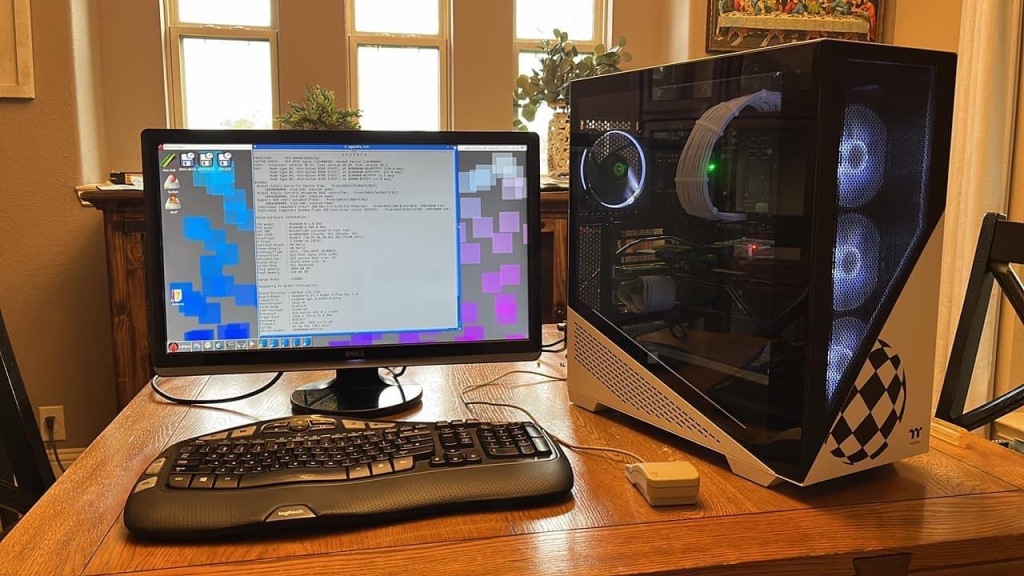
The Amiga 2000 EATX is a project by Jason Beer and is an open source Amiga 2000 PCB in the EATX form factor. EATX is an ATX variant that defines larger PCBs, measuring 12 x 13 inches (305 × 330 mm). These are referred to as Extended ATX, or, EATX. The length of Zorro II cards and the abundance of components on the Amiga 2000 makes EATX the best choice for this project.
There are one-to-one board replacement projects for the Amiga 2000, but none to change the layout to meet current form factor standards. In addition, the Amiga 2000 made use of connectors and custom parts that are no longer commercially manufactured. This often requires parts to be pulled from existing machines. As such, this project will make use of only actively supported components when possible.
In addition to a new board replacement option, I believe the ubiquitous EATX standard will bring additional interest to the Amiga as a hobbyist and retro-computing option. At the time or writting this, the Amiga operating system is still actively developed and supported. In addition, there is a substantial database of existing software and hardware add-on options and an active community.
(Amiga 2000 EATX Github)
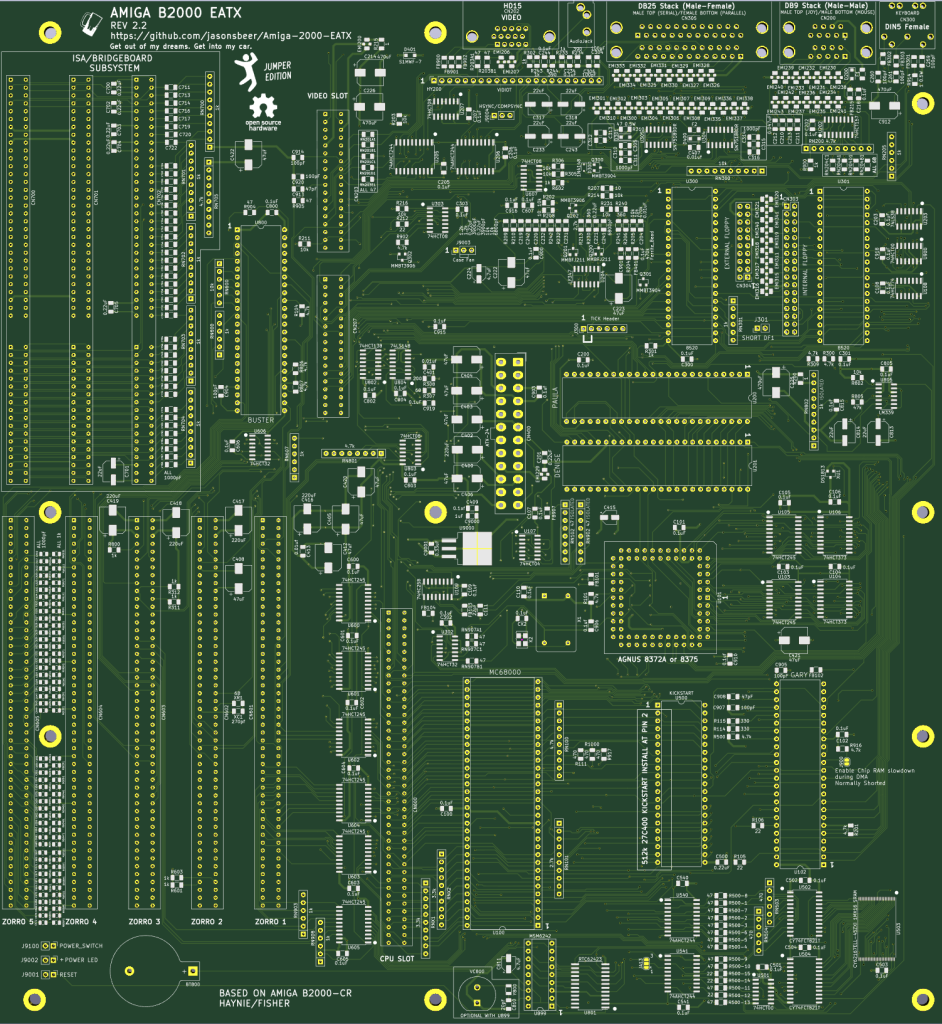
Revision 3.0 is the current production board. This one is Rev 2.2
This revision adds a TICK header with three options for generating a TICK signal.
Hardware Supported: All Amiga 2000 specific and Amiga general hardware is supported. The only exception would be external video hardware that would rely on signals not supplied on the HD15 video connection (see Video). Here is a list of hardware tested and known to work:
- A2630 68030 CPU Card
- Supra WordSYNC SCSI Controller
- A2090 SCSI Controller
- Vampire V2+
- PiStorm
- RGB2HDMI
- BuddhaIDE
- GottaGoFastRam2000
- Wireless keyboard adapter
- A2286AT Bridgeboard (on ISA: SnarkBarker (soundblaster clone), XT-CF Lite and TsengLabs ET4000AX)
(Amiga 2000 EATX Githbub
Changes from the original Amiga 2000
The Amiga 2000 EATX is derived from the Commodore Amiga 2000 Rev 6.2 schematics. To my knowledge, all known Rev 6.x PCB updates are included in this project.
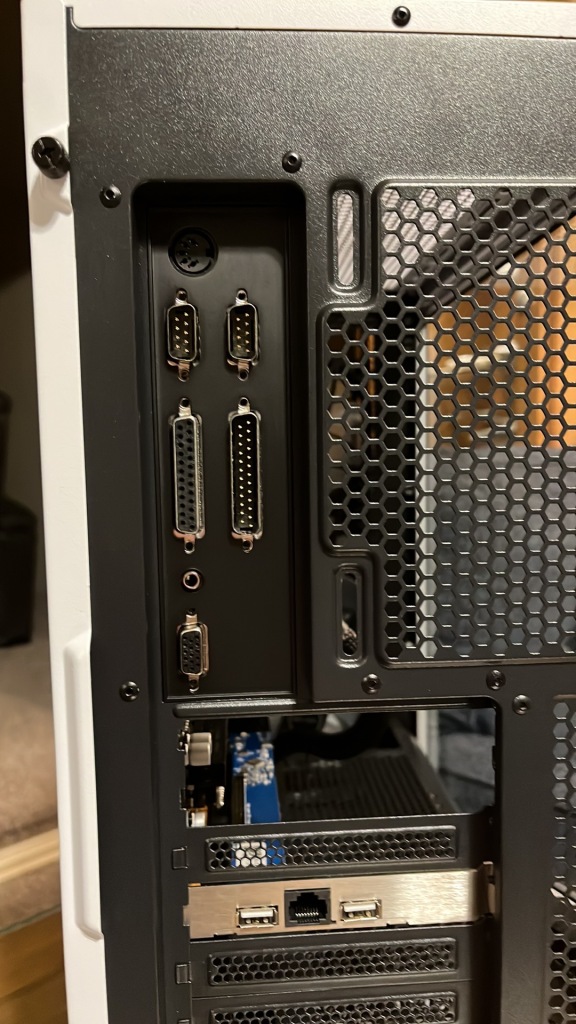
The ports can be seen above. From the top down, Keyboard (A2000), Joystick, Mouse, Parallel, Serial and VGA (15kHz)
Video
The DB23 video connector has been removed in favor of the HD15 connector. One of the goals of this project is to avoid parts that are not commercially available. The D-Sub 23 connector is a prime example. They are not stocked at popular electronic supply houses. Thus, the change to the widely available HD15 connector. Analog red, green, blue, HSYNC or COMPSYNC (jumper selectable), and VSYNC are supplied using the VGA standard pin out configuration. Other external video port signals are not supplied. Any VGA cable can be used to supply the video signal to a VGA monitor or conversion box supporting the 15KHz standard.
The internal video slot is complete with all signals.
The external composite video jack has been removed.
Memory
The original 256Kx4 DRAMs have been replaced by a single SRAM. The Amiga 2000 EATX supports 1 or 2 MB of chip memory, depending on your Agnus version.
Audio Output
The left/right RCA jacks of the Amiga have been replaced by a 3.5mm stereo audio jack.
Disk Drive Support
Internally, any Amiga compatable double density disk drive or properly configured Gotek floppy emulator is supported. Up to two internal disk drives may be connected to the internal floppy connector. Up to two external disk drives may be connected via a user supplied adapter cable.
ISA Slots
The number of 16 bit ISA slots has been reduced to three. This was done to provide additional space on the board. Support for ISA cards via a Bridgeboard is unchanged from the Amiga 2000.
Serial Port
The internal (infernal) serial port has been removed. The external serial port is present with all signals.
PCB Layout
For obvious reasons, it was necessary to move components relative to one another. Zorro slots occupy slot positions 1-5, overlapping with ISA slots in the first 3 positions. The video slot occupies the sixth slot position on the board. The CPU slot occupies position 7. It is possible to have every slot position populated simultaneously.
ATX Power
ATX 24-pin power supplies are supported with -5V being supplied on board via a voltage regulator. The original Amiga 2000 power supply is not supported.
External Reset Switch
The computer can be reset via CTRL-Amiga-Amiga on an Amiga keyboard or via the reset switch found on EATX computer cases.
Real Time Clock
There are two real time clock (RTC) options beginning with revision 2.x. You can install the original Amiga 2000 RTC, which is based on the MSM6242, or a simplified RTC based on the RTC-62423. The MSM6242 requires more components and will need to be trimmed to dial in the correct clock speed. The RTC-62423 has a built in crystal and does not need adjustment, but is less accurate over time. In the Amiga, the RTC is written and read by 4 address and 4 data lines. There are no direct “modern” replacements for the type of bus connected RTC used in the Amiga. As such, the RTC chip you choose is among the legacy IC’s that must be obtained.
TICK
The TICK timing signal on the original Amiga 2000 was supplied by the power supply and is a 50 or 60Hz signal determined by the mains power in use. ATX power supplies do not supply a TICK or any AC signal. Starting with Revision 2.2, a TICK Header (J300) was added to support independently generated TICK signals in the event your desired configuration demands this. The factory default setting supplies a TICK signal from the Agnus _VSYNC signal, which is suitable for most configurations. See TICK HEADER for more details and considerations. All revisions 2.1 and lower use the Agnus _VSYNC signal.
What has not changed?
Most External Ports
The keyboard, joystick, mouse, parallel, and serial ports are all present and function as they did in the Amiga 2000. The parallel, serial, mouse, and joystick ports are stacked DB9 and DB25 connectors, respectively. The Amiga keyboard port remains a DIN5 connector.
Zorro II Slots
There are no changes to the Zorro II slots.
Kickstart ROM
For now, the Kickstart ROM remains the original 27C400. These are no longer made, but are easy to find. In addition, this allows the use of an original Commodore Kickstart mask ROM. Revision 1.2 added support for 1MB (27C800) and 2MB (27C160) EPROMs for custom Kickstart ROMs.
Everything Else
If something is not specifically mentioned, you should expect it to be unchanged in function or component from the original Amiga 2000.
(Amiga 2000 EATX Github)
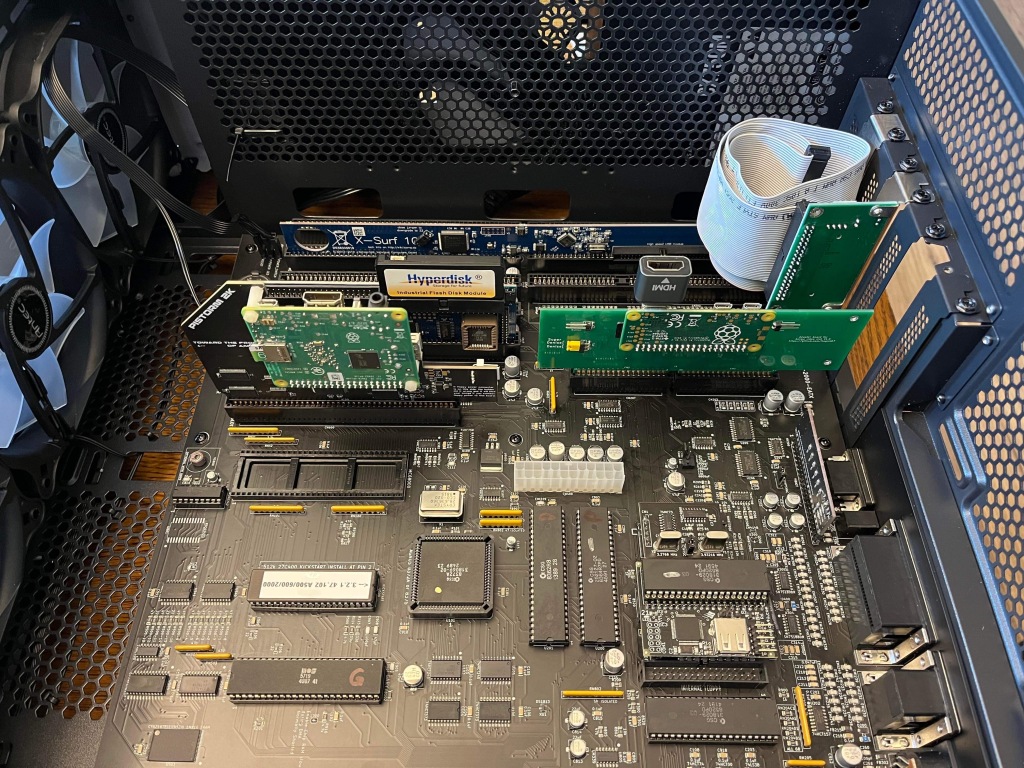
From the bottom of the photo to the top, my Amiga 2000 EATX houses a Wireless Keyboard adapter (bottom right corner). This connects to U300 on the board. You remove the CIA chip and install the board. This board will not fit with raising the board up to clear the floppy connector. This was done by using two 40-pint sockets. I installed the sockets to the adapter board, installed the CIA and then installed the whole assembly into the motherboard.
As you can see the 68000 processor is removed. I had to removed it to accommodate the PiStorm 2K board in the CPU slot. Utilizing a PiStorm2K, you must remove the 68000. It will not boot with it installed. Attached to the PiStorm 2K board is a Raspberry Pi 3a+ running Emu68 and CaffineOS.
In the video slot, you will see the RGB2HDMI adapter. This is version 1 of the adapter. I’m planning on replacing it with version 2. Version 2 fixes the “sparkling” issue found on the earlier boards. Attached to the RGB2HDMI is a Raspberry Pi Zero 1.3.
Behind the PiStorm2k, you will find the Individual Computers Buddha IDE 20th Anniversary Edition. One IDE slot will be attached to a CF Card reader. This will allow me transfer files from a PC to the Amiga. The other slot holds a Disk On Module. This is essentially an IDE SSD.
The very last card in this system is an Individual Computers X-Surf 100 Ethernet board. This of course will be used to access the internet, telnet into BBSs, SMB into my NAS, etc…
Thoughts
Overall, I am beside myself to have one of these. The quality of the build, the ability to have new modern components, a new modern tower case, ATX power supply and USB keyboard is just a WIN for me.
I’m a big fan of the original Amiga 2000. It’s my favorite big box Amiga. The expansion possibilities it has are just growing. With my classic machines well over 30 years old, I’m worried about their functionality. With this, I don’t have have to worry about that anymore. With PiStorm, I get the benefits of a RTG Amiga system. I am very pleased!
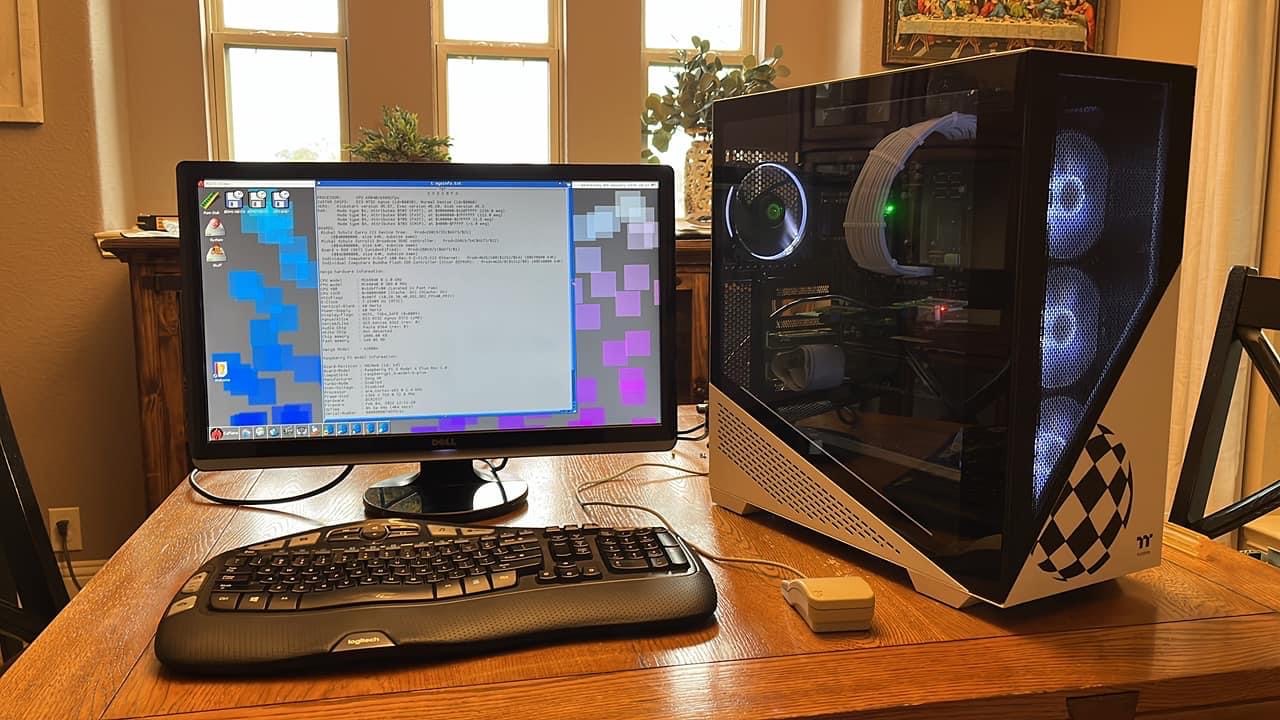
Leave a comment